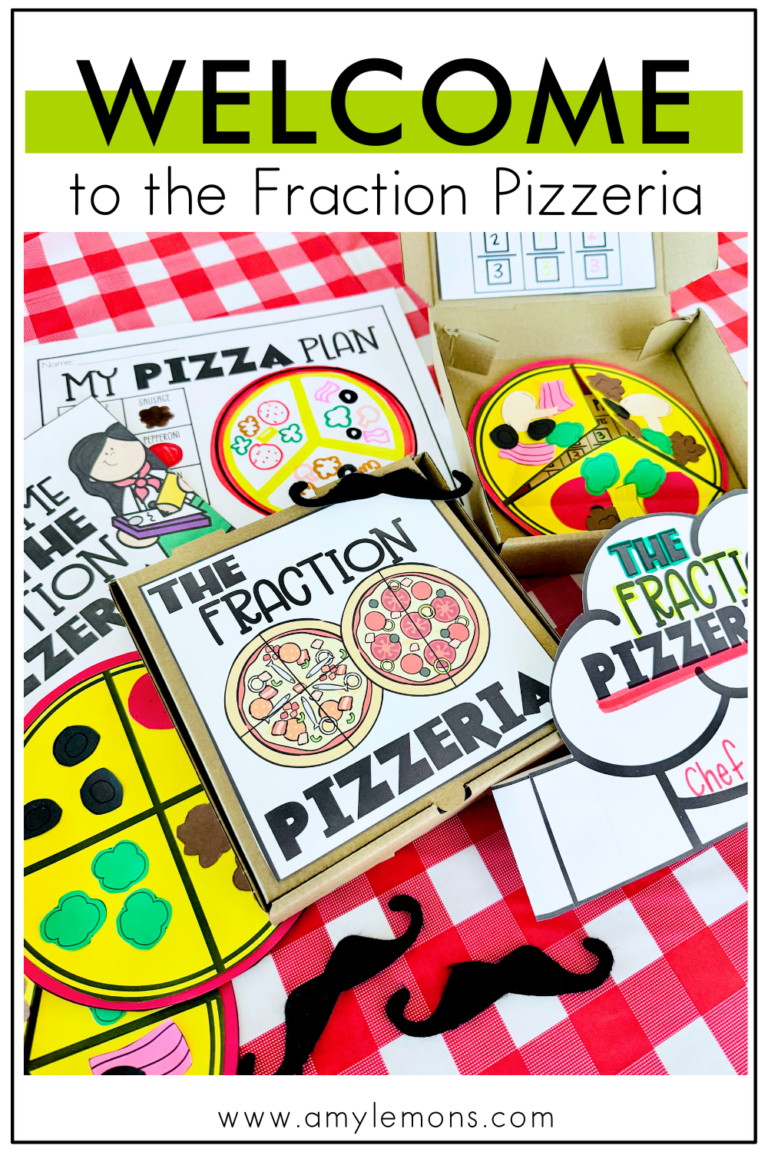

As teachers, sometimes we feel that we need the next great big thing to finally transform our classroom into an engagement machine for optimal learning. This can be especially true when it comes to math instruction because it can be difficult to grasp. But the truth is, it’s usually the simple things that keep our students’ attention and drive reinforcement of whatever we’re teaching. Of course, there is a time and place when you do need that great big thing to help struggling students or fix a curriculum that simply isn’t effective. But when it comes to the small, everyday moments of reviewing and reinforcing skills, low-cost + low maintenance math activities can make a big impact on the education of your students.
I have a few tried and true activity types that always work for me. The key has always been to include simple, inexpensive manipulatives and fun, relatable themes. You want tools that can be used over and over again. That’s how you keep costs down and stay consistent in your lesson plans. For this post, I’m going to share a few examples of what I mean by low cost, low maintenance activities so you can get an idea of what to include in your plans, plus I’ll be sharing a couple of FREEBIES to get you started!
Graphing and analyzing data is probably one of the easiest skills to teach using zero-fuss activities. For example, I like to do something as simple as having the students roll dice and graph their rolls. You can see what this looks like in the image above of my Let’s Graph resource. Dice are inexpensive and they last forever, as long as your students don’t lose them, ha! Using a no-prep recording sheet and dice, students can graph with ease.
Remember when I mentioned having fun themes? Your activities don’t have to be extravagant or cost a ton as long as they are enjoyable! Solving riddles is not only a good brain teaser but an effective way to get students to solve math problems. You could come up with your own riddles or find a template for very little. To show you just how effective they can be, I am including the riddle sheet above pulled from my 2-digit Addition with Regrouping Riddles unit for FREE below.
Personally, I really enjoy incorporating spinner activities into my math instruction. They really heighten your students’ anticipation as they wait to see where the spinner lands. It’s easy and inexpensive to use them, but you can make this even more pocket-friendly by using paper clips as the spinner. As you can see in the example above, sometimes you just don’t have the resources to get multiple spinners in your class but we’re almost never low on paper clips. In Spin and Solve, students choose a number from the list then spin the paperclip to find out which operation they will be solving with. See? Simple, inexpensive, AND effective.
I tend to mention food often when I’m sharing effective strategies in the classroom, but the food is the ultimate engagement tool. Not to mention, food can be purchased in bulk at low prices and they work amazingly well for solving and constructing math equations or concepts. For example, in our Food Facts activity, students use Twizzlers as tens and Skittles as ones to help create and solve equations easily. Candy will always keep your student’s attention and the cost is minimal.
Do you use poms in your classroom? I find them to be unexpected manipulatives that students enjoy! It could be because of their soft feel but for me, I love that they can’t roll all over the place. Plus, you can buy a huge bundle of them for so little! I use them in many ways outside of crafting, but one of my favorites is using them as ‘balls’ for students to toss. You can see what this looks like in the Toss & Solve activity I have as a FREEBIE for you. This is one of many of the No Prep math games I swear by. You can see it in action and grab the template HERE and learn about a few other low-cost math activities that pack big impact!


Hey, y’all! My name is Amy Lemons and I am passionate about providing students with both engaging and effective standards-based Math and ELA lessons.

Sample a day of Rooted in Reading with these lesson plans and activities for Reading Comprehension, Vocabulary, and Grammar!